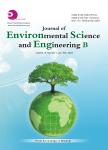The Relationship between Major Components of PM2.5 and Meteorological Factors in Urban Tokyo, Japan
The Relationship between Major Components of PM2.5 and Meteorological Factors in Urban Tokyo, Japan作者机构:Graduate School of Science and Technology Niigata University 8050 Ikarashi 2-no-cho Nishi-ku Niigata 950-2181 Japan College of Chemistry and Chemical Engineering Qiqihaer University No. 42 Wenhua Street Qiqihar 161006 China
出 版 物:《Journal of Environmental Science and Engineering(B)》 (环境科学与工程(B))
年 卷 期:2017年第6卷第1期
页 面:27-33页
学科分类:07[理学] 070602[理学-大气物理学与大气环境] 0706[理学-大气科学]
主 题:PM2.5 major components meteorological factors.
摘 要:In this research, the main purpose is to estimate the variation of PM2.5 mass concentration and study the influence of meteorological characteristics on major components of PM2.5 concentrations in urban Tokyo, Japan. The results shown that the annual mean mass concentration of PM2.5 in urban Tokyo was higher than JEQS (Japanese Environmental Quality Standard) of the MOEJ (Ministry of the Environment Japan) (15 μg/m^3), and 41.1% of the daily PM2.5 mass concentration exceeded the annual JEQS concentration during observation period. The major components of PM2.5 including SO4^2-, NO3^-, NH4^+, OC and EC were tightly related to the meteorological conditions, the correlations results shown that the wind speed and relative humidity had significant correlations with major components of PM2.5 than the other meteorological factors. Higher relative humidity, windless and less rainfall conditions were favorable for elimination of PM2.5 concentration. Higher temperature was beneficial to the formation of SO42", but higher temperature and stronger sunshine duration were not conducive to the formation of NO3^-.



